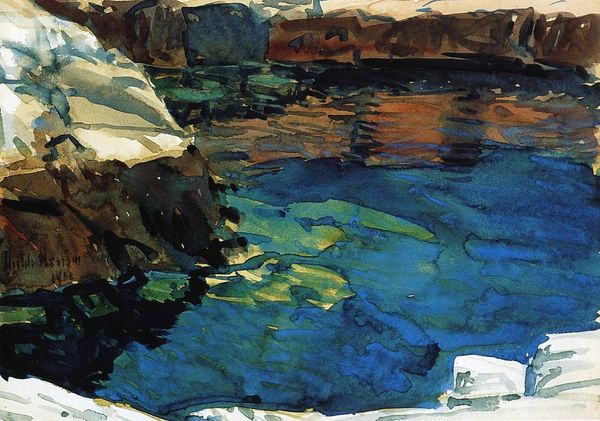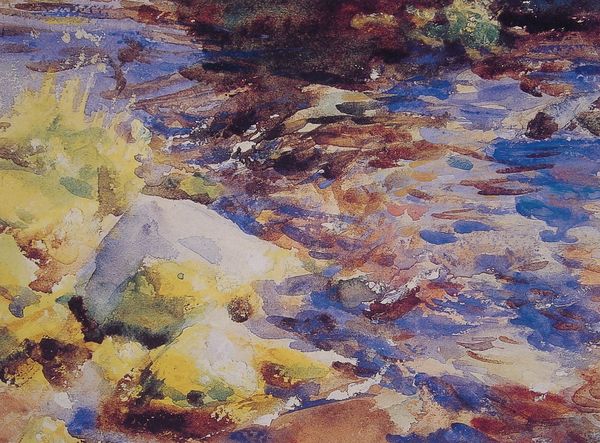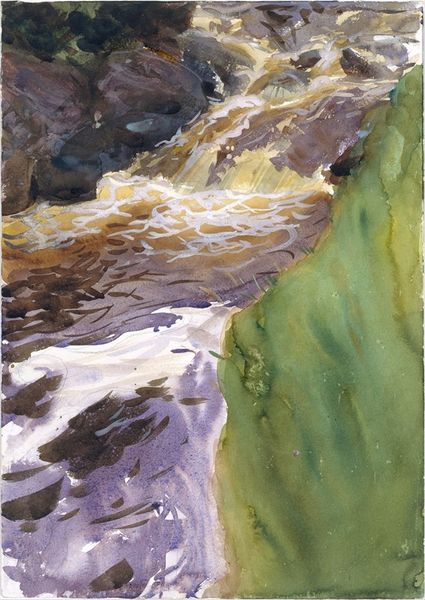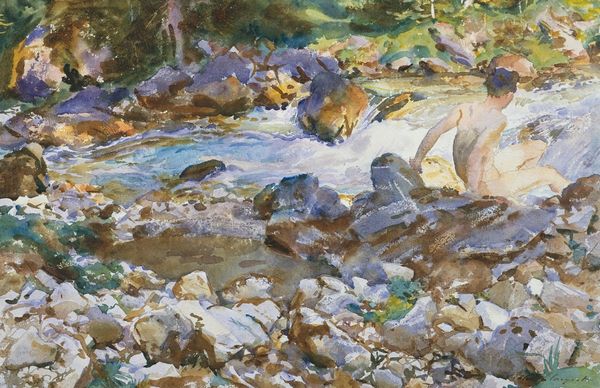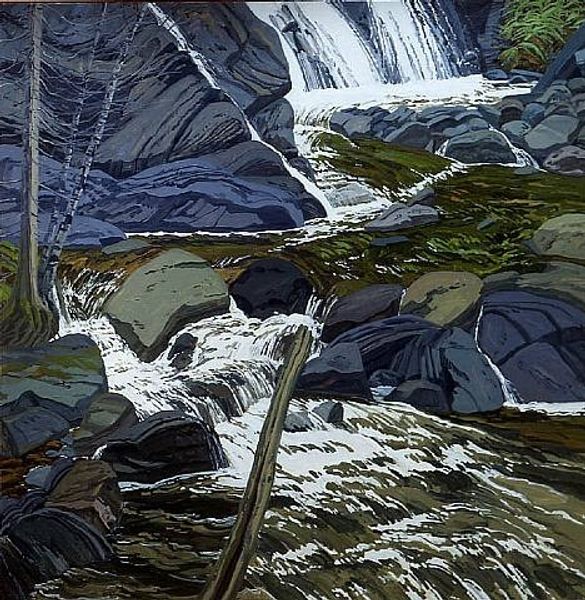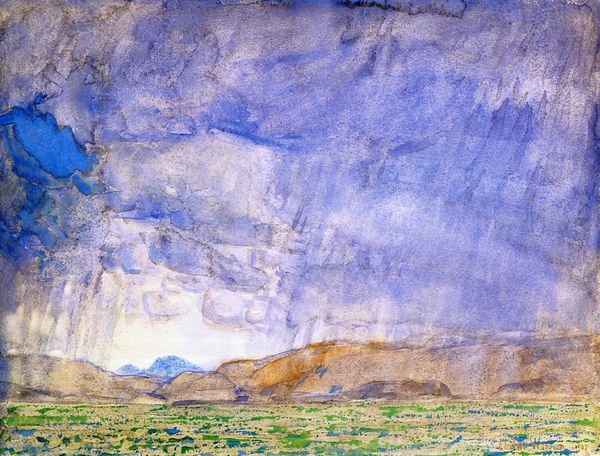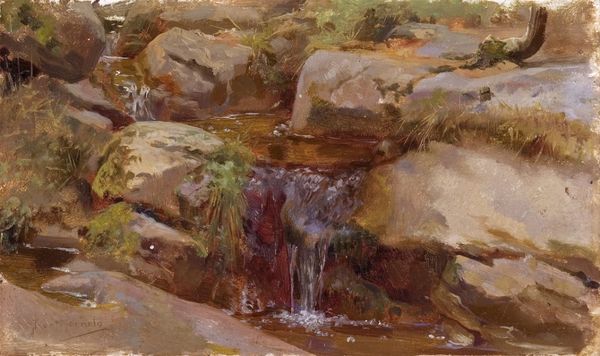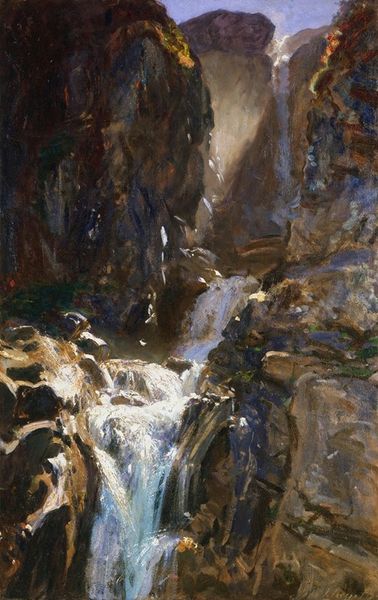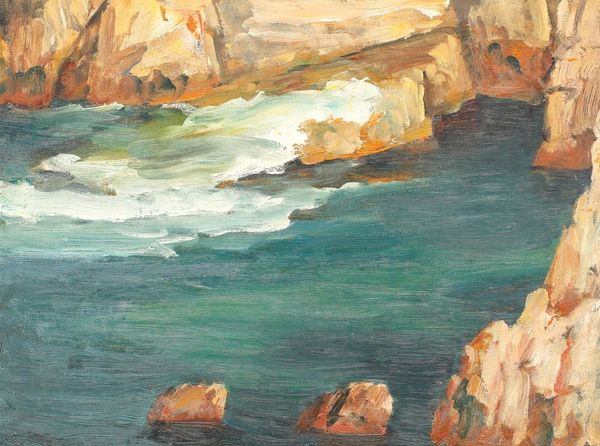
plein-air, oil-paint, impasto
#
plein-air
#
oil-paint
#
landscape
#
oil painting
#
impasto
#
rock
#
romanticism
#
water
Copyright: Public domain
Editor: So, we're looking at Ferdynand Ruszczyc's *Brzeg morza i skaly*, or "Seashore and Rocks." The artwork has no exact date but he’s known for plein-air paintings using oil paint and an impasto technique. It's an intimate view, almost like a snapshot, and that striking green in the water is immediately captivating. How do you read a work like this, placing it within the context of art history? Curator: It is fascinating. Considering the public role of art at the time, a landscape like this offered a crucial space for national and cultural identity formation, particularly in partitioned Poland. Do you notice how Ruszczyc focuses on the unyielding rocks and the somewhat turbulent water? Editor: Yes, there's definitely a sense of enduring strength conveyed, but is there a connection to Polish nationalism that I’m missing? Curator: These natural elements acted as powerful symbols. For a nation struggling for independence, the unyielding rocks and persistent sea served as metaphors for resilience and the enduring spirit of the Polish people. Remember that during this period, cultural expression became a form of political resistance. How do you think the location itself – the seashore – might contribute to this reading? Editor: That's interesting, framing nature as resistance. The sea can represent freedom and also the boundaries of the land, almost marking territory, maybe implying a claim to it? This makes me look at the impasto brushstrokes differently too; as visible assertions, declaring presence. Curator: Precisely. And consider how such images might circulate within exhibitions, reproduced in journals. Ruszczyc’s “Seashore and Rocks” became more than just a pretty landscape; it participated in a broader dialogue about national identity. Editor: I didn’t expect that level of symbolic meaning embedded within a seemingly simple landscape. It’s a reminder that art is very rarely created in a vacuum, and I must investigate context. Curator: Indeed, art carries cultural and political weight. It teaches us that even the most seemingly innocent of artistic impressions can reflect and shape societal narratives.
Comments
No comments
Be the first to comment and join the conversation on the ultimate creative platform.

